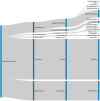Sharing Vitamin B12 between Bacteria and Microalgae Does Not Systematically Occur: Case Study of the Haptophyte Tisochrysis lutea
- PMID: 35889056
- PMCID: PMC9323062
- DOI: 10.3390/microorganisms10071337
Sharing Vitamin B12 between Bacteria and Microalgae Does Not Systematically Occur: Case Study of the Haptophyte Tisochrysis lutea
Abstract
Haptophyte microalgae are key contributors to microbial communities in many environments. It has been proposed recently that members of this group would be virtually all dependent on vitamin B12 (cobalamin), an enzymatic cofactor produced only by some bacteria and archaea. Here, we examined the processes of vitamin B12 acquisition by haptophytes. We tested whether co-cultivating the model species Tisochrysis lutea with B12-producing bacteria in vitamin-deprived conditions would allow the microalga to overcome B12 deprivation. While T. lutea can grow by scavenging vitamin B12 from bacterial extracts, co-culture experiments showed that the algae did not receive B12 from its associated bacteria, despite bacteria/algae ratios supposedly being sufficient to allow enough vitamin production. Since other studies reported mutualistic algae-bacteria interactions for cobalamin, these results question the specificity of such associations. Finally, cultivating T. lutea with a complex bacterial consortium in the absence of the vitamin partially rescued its growth, highlighting the importance of microbial interactions and diversity. This work suggests that direct sharing of vitamin B12 is specific to each species pair and that algae in complex natural communities can acquire it indirectly by other mechanisms (e.g., after bacterial lysis).
Keywords: Tisochrysis lutea; cobalamin; haptophytes; microbial interactions; phytoplankton; vitamin B12.
Conflict of interest statement
The authors declare no conflict of interest.
Figures




Similar articles
-
How haptophytes microalgae mitigate vitamin B12 limitation.Sci Rep. 2019 Jun 10;9(1):8417. doi: 10.1038/s41598-019-44797-w. Sci Rep. 2019. PMID: 31182768 Free PMC article.
-
Algae acquire vitamin B12 through a symbiotic relationship with bacteria.Nature. 2005 Nov 3;438(7064):90-3. doi: 10.1038/nature04056. Nature. 2005. PMID: 16267554
-
Microbial Plankton Community Structure and Function Responses to Vitamin B12 and B1 Amendments in an Upwelling System.Appl Environ Microbiol. 2021 Oct 28;87(22):e0152521. doi: 10.1128/AEM.01525-21. Epub 2021 Sep 8. Appl Environ Microbiol. 2021. PMID: 34495690 Free PMC article.
-
Vitamin B12 sources and microbial interaction.Exp Biol Med (Maywood). 2018 Jan;243(2):148-158. doi: 10.1177/1535370217746612. Epub 2017 Dec 7. Exp Biol Med (Maywood). 2018. PMID: 29216732 Free PMC article. Review.
-
Microbial and Genetic Resources for Cobalamin (Vitamin B12) Biosynthesis: From Ecosystems to Industrial Biotechnology.Int J Mol Sci. 2021 Apr 26;22(9):4522. doi: 10.3390/ijms22094522. Int J Mol Sci. 2021. PMID: 33926061 Free PMC article. Review.
Cited by
-
A unique symbiosome in an anaerobic single-celled eukaryote.Nat Commun. 2024 Nov 9;15(1):9726. doi: 10.1038/s41467-024-54102-7. Nat Commun. 2024. PMID: 39521804 Free PMC article.
-
Phenotype stability and dynamics of transposable elements in a strain of the microalga Tisochrysis lutea with improved lipid traits.PLoS One. 2023 Apr 27;18(4):e0284656. doi: 10.1371/journal.pone.0284656. eCollection 2023. PLoS One. 2023. PMID: 37104376 Free PMC article.
-
Phytoplankton-Bacteria Interactions 2.0.Microorganisms. 2023 Jun 9;11(6):1536. doi: 10.3390/microorganisms11061536. Microorganisms. 2023. PMID: 37375038 Free PMC article.
-
Chlamydomonas reinhardtii, a Reference Organism to Study Algal-Microbial Interactions: Why Can't They Be Friends?Plants (Basel). 2023 Feb 9;12(4):788. doi: 10.3390/plants12040788. Plants (Basel). 2023. PMID: 36840135 Free PMC article. Review.
-
Advanced wastewater treatment with microalgae-indigenous bacterial interactions.Environ Sci Ecotechnol. 2023 Dec 21;20:100374. doi: 10.1016/j.ese.2023.100374. eCollection 2024 Jul. Environ Sci Ecotechnol. 2023. PMID: 38283868 Free PMC article.
References
-
- Provasoli C. Algal Physiology and Biochemistry. University of California Press; Berkeley, CA, USA: 1974. Vitamins and Growth Regulation; pp. 741–787. Botanical monographs.
Grants and funding
LinkOut - more resources
Full Text Sources

